By Tyler Rossi for CoinWeek …..
Over the roughly one thousand years that followed the overthrew of the last king in 509 BCE, Rome underwent many cultural revolutions. Some of the most notable changes include the rise of the Triumvirates and the overthrow of the Republic, the increasingly autocratic nature of the subsequent Empire, and the barbarization of the army and late Roman society – all of which resulted eventually in the decline and dismantling of many imperial structures.
As discussed in previous articles, coins serve three main functions: the basic monetary and economic role of facilitating trade, the formation of political legitimacy and the distribution of propaganda, and the strengthening of cultural identity. In a culture as long-lasting as Rome, this last part is especially interesting. By studying the changing portraiture and stylistic design choices on various numismatic issues and types, we can follow the social and political developments of the host culture.
Roman Bronze
The earliest Roman coins, the aes grave, were extremely crude cast bronze coins – for example, this offcut (ramo secco) from a larger cast bar of bronze that was cast in Central Italy sometime during the late fourth and early third centuries BCE. These larger ramo secco ranged in weight from 600 grams to 2.5 kilograms and were used in similar ways to the Swedish large copper Plate Money of the 17th and 18th centuries CE.
What can the use of these large bronze ingots as coinage tell us about their producers? Mainly that there were no readily available sources of silver and gold bullion for use in striking coins.
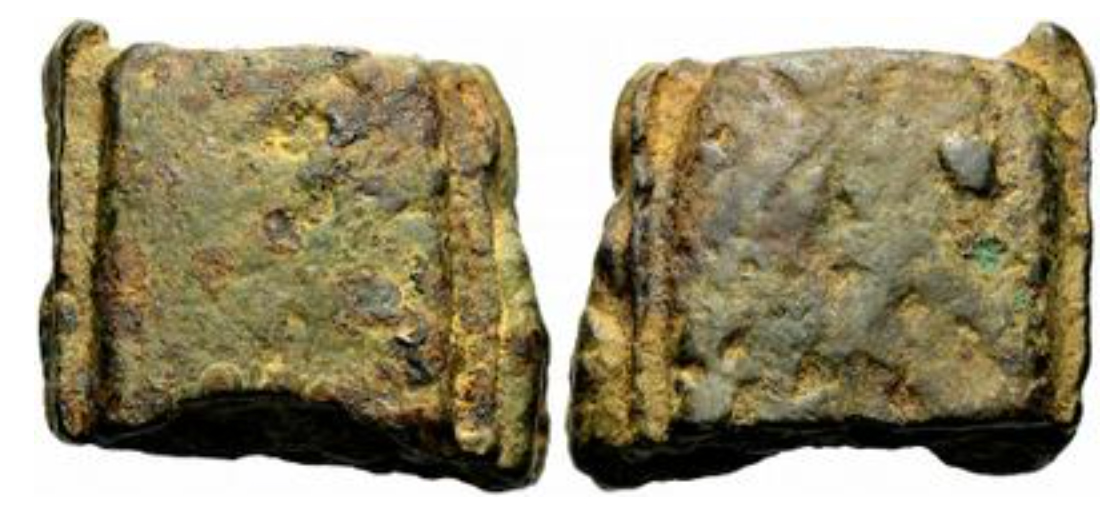

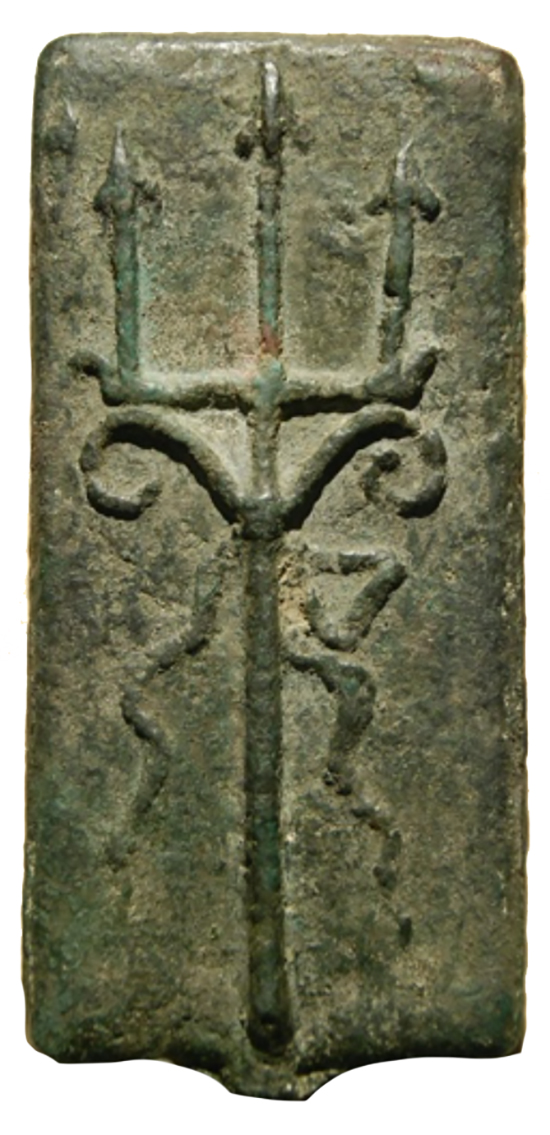
The First Silver and Gold Coins
Rome quickly moved past these cast aes bronze coins as the Republic expanded in the third and second centuries BCE.
As a result of the Punic wars, Rome gained access to silver mines on the Mediterranean islands of Sardinia and Sicily, as well as the vast deposits of gold on the Iberian Peninsula. These deposits were so large, in fact, that Rome forced over 40,000 slaves to extract the silver ore in their Spanish provinces (Cartwright). This massive, and rapid, influx of precious metal into the Roman economy fundamentally altered the coinage. The denarius, which would become the de facto trade dollar of the Mediterranean for hundreds of years, was first struck during the Second Punic War when Hannibal was riding roughshod over the Italian countryside (Mattingly, 2).
The designs of these beautiful coins were set each year by the tresviri auro argento aere flando feriundo or “the three men for casting and striking of gold, silver and bronze”. Also known as moneyers, the tresviri were often young men who selected the designs and ensured smooth production of the Republic’s coinage. The designs ranged from “standard” to more “stereotyped” types (Macquarie). The main early obverse designs were of a helmeted head of Roma, a laureate head of Janus, and Juno Moneta, among many others. While life-like and generally anatomically correct, these designs displayed an intentionally formulaic nature through which the Republic propagated its mythical history and strength.

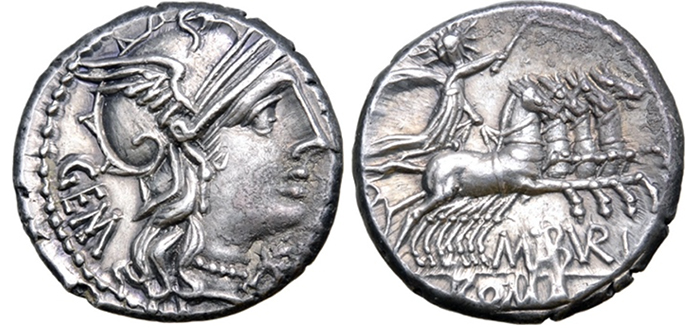
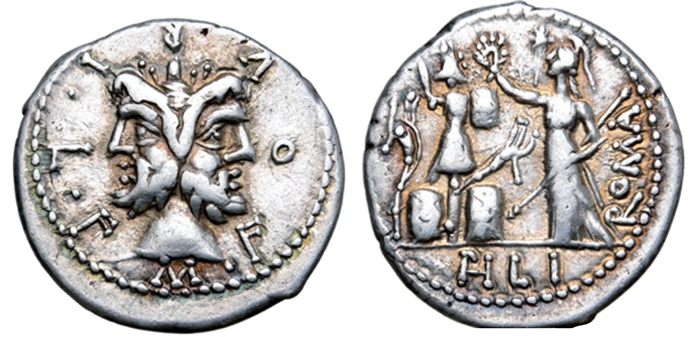
The First Portraits of Living Romans
While Roman moneyers had included a series of ancestral portraits on earlier denarii, the first portrait of a living man to appear on a Roman coin was that of Julius Caesar. This decision was arguably one of the reasons for Caesar’s assassination. Many influential Romans considered it a move towards a renewed monarchy, and with the peculiar Roman aversion to kingship, this was a massive breach of social norms.

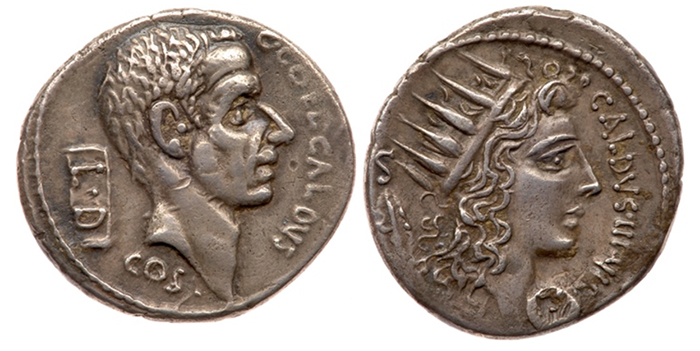
These portraits, while depicting real individuals, are stylized and cannot be viewed as hyper-realistic like later Roman numismatic types. They do, however, display what may be considered the age and wisdom of the individual, thus lending gravitas to their families and actions.
And speaking of gravitas, perhaps the most famous portrait coin from the time of the Triumvirates is the Eid Mar denarius, which depicts a relatively lifelike portrait of Marcus Junius Brutus, one of Caesar’s assassins. His portrait is on the obverse while on the reverse a Dioscuri Cap, representing liberty, is placed between paired daggers with the legend “Eid Mar” at the bottom – a clear reference to the assassination.
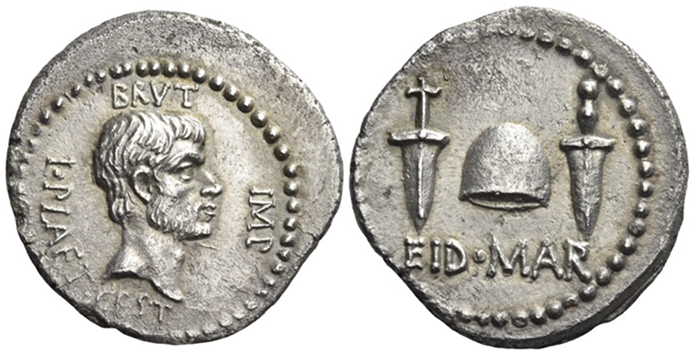
Imperial Portraits
This shift in portrait style, from allegorical representations of divinities to semi-realistic depictions of real individuals, marked a highly important turning point in Roman coinage. From the 40s BCE until the titular end of the Western Roman Empire in 476 CE (over 500 years), the vast majority of silver and gold coins would depict the various emperors as part of the obverse designs. No longer would there be a cultural taboo restricting such an act of personal aggrandizement.
Coins from the Principate, founded by Caesar’s nephew Augustus (née Octavian) in 27 BCE, started with similar stylized portraiture. However, unlike the earlier portrait denarii that emphasized age and strength, the new coinage was more in keeping with classical Greek aesthetics, designed to convey the emperor’s carefully curated image of perpetual youth and transcendence. This trend became so ingrained that portraits on coins from the beginning of Augustus’s reign in 27 BCE look practically identical to those struck in 14 CE, 41 years later right before his death at age 75.
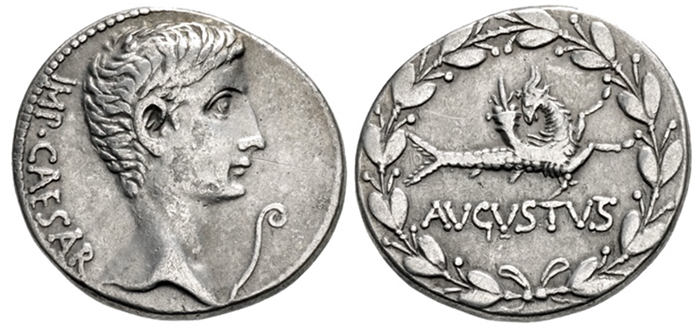
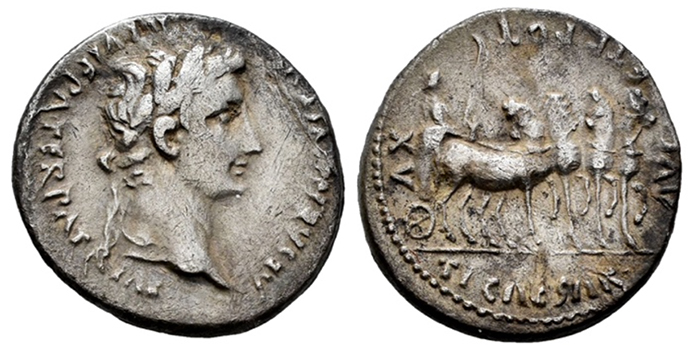
As the Principate evolved, so did its coinage. Gone were the heady days of Augustus and reality slowly set in that the Republic would not be resuscitated. Instead, there were staggeringly wealthy individuals that wielded immense power throughout the empire with the thinnest veneer of senatorial control.
Numismatic portraiture reflected this new reality.
Yet now it was the reverse of the coin that conveyed the main imperial message, whether that be to promote a military victory, a particularly important building project, or simply an imperial virtue. A good example of this is Trajan. Ruling from 98 to 117 CE, Trajan is known as one of the most successful monarchs in the empire’s history. His coinage reflects strength, wisdom, and stability in its faithful portraiture. While there is some variation between types, Trajanic coins are attempts at faithful depictions of the emperor. As can be observed by the general form of the portraits, this variation was not due to active design choices but rather because of the engraver’s craftsmanship or the distance of provincial cities from Rome and the resulting lack of knowledge of the emperor’s actual likeness.
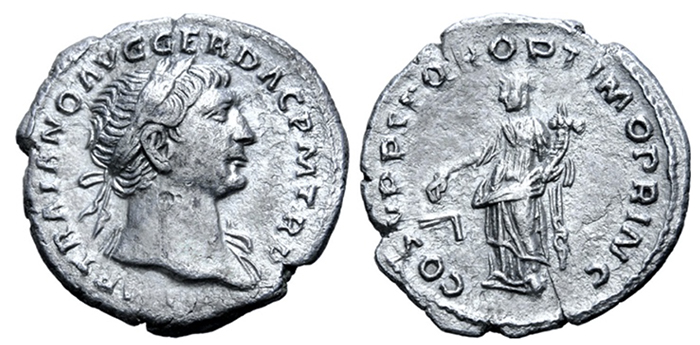

Throughout the Antonine, Severan, and Gordian dynasties–as well as with the various short-lived rulers scattered among the mid-100s and 200s CE–the portrait style changed. Around 250 CE, the style once again became formulaic. One reason may be the short reigns of these emperors. Named the “Crisis of the Third Century“, from 235 through 284 CE the average reign lasted less than two-and-a-half years, including the 15-year reign of Gallienus and the approximately six-year-long reigns of Valerian and Probus.
Even though they were not all related by blood, the coins of Phillip II, Herennius Etruscus, Hostilian, Trebonianus Gallus, and Volusianus all bear a distinct resemblance to each other. These obverse busts display only slight variations in terms of age and style and can be seen below.
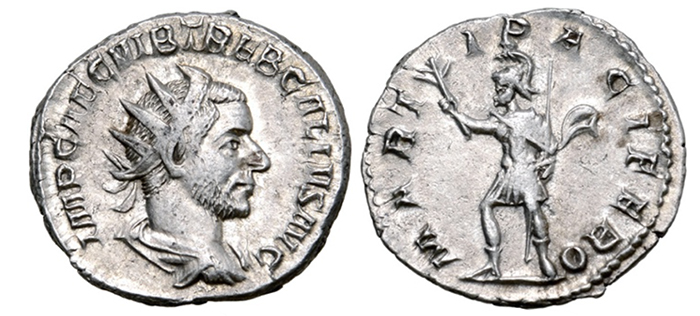
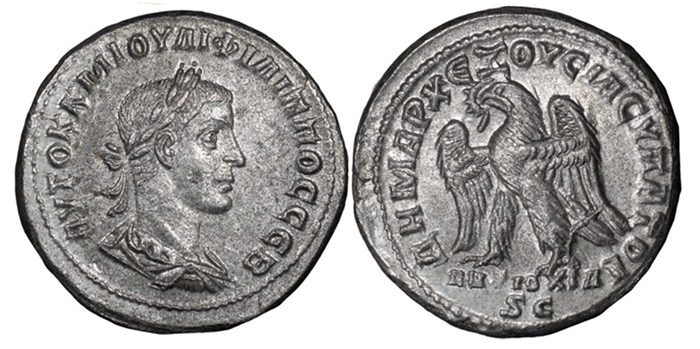
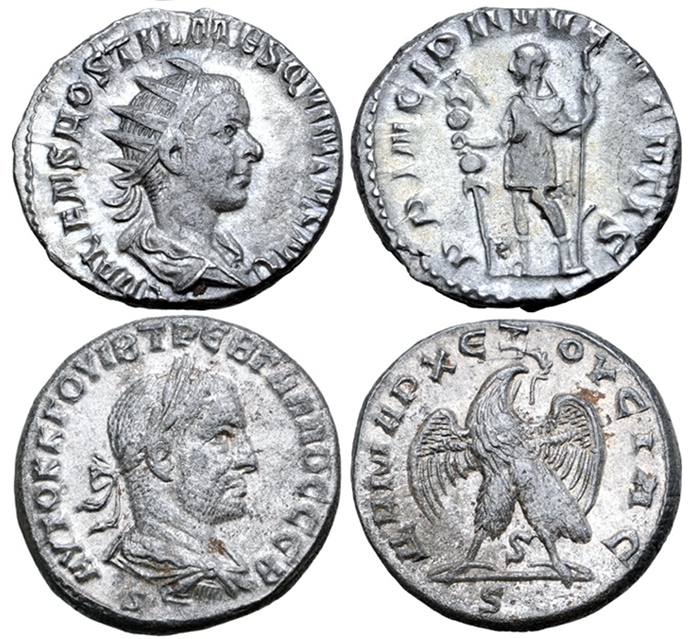
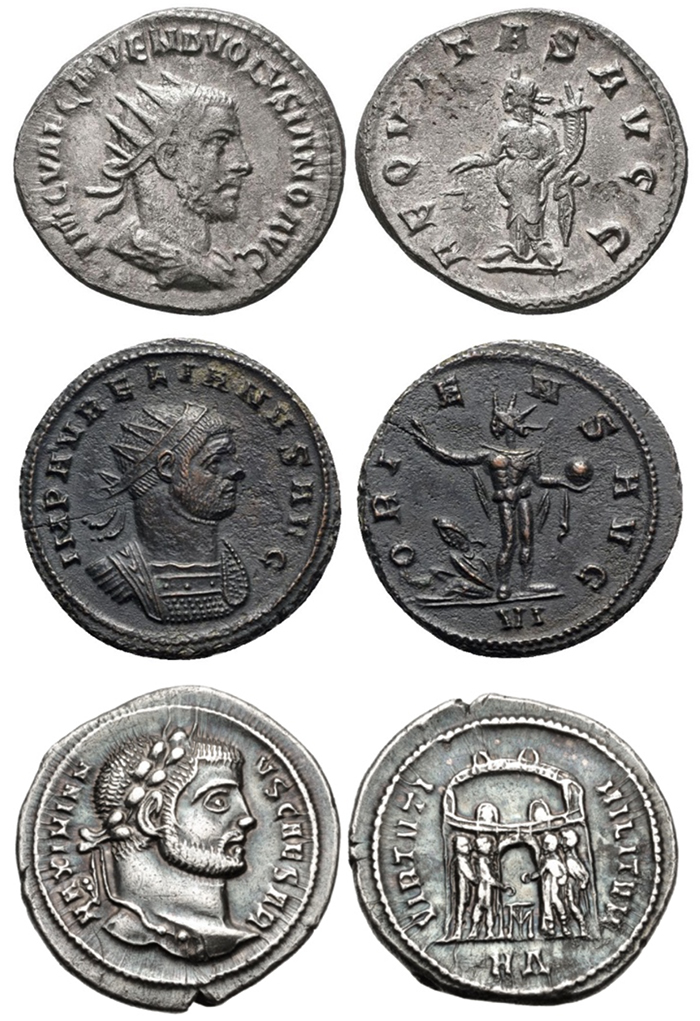
A similar phenomenon happened between 268 and 275 CE with the emperors Claudius II “Gothicus”, Quintillus, and Aurelian. These three all had very similar portraits struck on their coinage. The busts of all three prominently displayed military armor in a break from the traditional toga that many earlier emperors chose to include in their portraits. Another defining characteristic is the incorrect proportions between the head and shoulders, with the head appearing much too large.
Roman Coinage of the Late Empire
Until the death of Numerian in 284 CE, the portraits on Roman coinage were more or less individualized. However, with the ascension of Diocletian and the rise of the Dominate, the coinage of each proceeding dynasty became highly stylized and lost many characteristics of the individual emperors. For example, many of the coins of Constantius I (ruled 305-306) and Galerius (305-311), look very similar and are highly stylized.
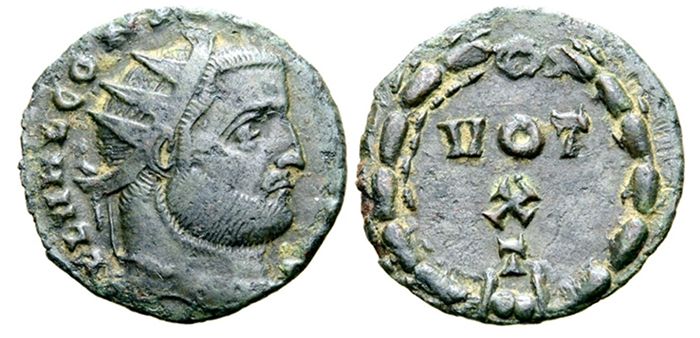
The Valentinianic dynasty engaged in a similar numismatic ideology and many of them struck coins with almost identical portraiture as can be seen below. While this style began earlier in the Constantinian Dynasty, the beaded diadem type came to the forefront with the Valentinianic Roman coinage. For example, the portraits of Valens and his son-in-law Theodosius I on these gold solidi are wearing very similar imperial regalia and have similar physical features.

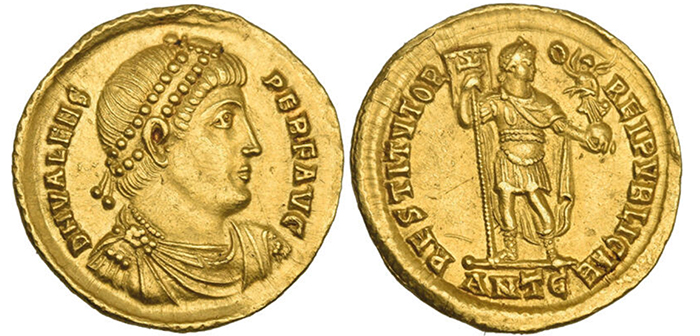
The question is why do so many later Roman emperors have almost indistinguishable numismatic portraits? Notable historian and numismatist Richard Reece posits several main reasons.
Firstly, towards the end of the first decade of the fourth century CE, the coinage lost its “locality”. In the face of increased instability, the imperial office strove to standardize the coinage in an attempt to retain unity. Reece also argues that the “indistinguishable” nature and extremely brief reigns of many of these rulers reinforced this consistency. Additionally, many of these emperors would use the imagery of previous rulers to bolster their own weak legitimacy.
For almost one thousand years, the Romans produced beautiful coinage that tells a story of a people who grew to conquer and rule one of the largest empires of all time. Therefore, it is interesting to study what Roman coinage can tell us about the emperors who steered that empire from victory to defeat and finally to oblivion.
* * *
Sources
https://scihubtw.tw/10.1163/22134522-90000041
http://www.humanities.mq.edu.au/acans/caesar/Intro_Moneyer.htm
http://numismatics.org/rome-a-thousand-years-of-monetary-history/
https://www.history.com/topics/ancient-rome/ancient-rome
Cartwright – https://www.ancient.eu/Silver/
Mattingly – https://www.jstor.org/stable/297314?seq=3#metadata_info_tab_contents
* * *
About the Author
Tyler Rossi is currently a graduate student at Brandeis University’s Heller School of Social Policy and Management and studies Sustainable International Development and Conflict Resolution. Before graduating from American University in Washington D.C., he worked for Save the Children creating and running international development projects. Recently, Tyler returned to the US from living abroad in the Republic of North Macedonia, where he served as a Peace Corps volunteer for three years. Tyler is an avid numismatist and for over a decade has cultivated a deep interest in pre-modern and ancient coinage from around the world. He is a member of the American Numismatic Association (ANA).





Articolo molto interessante ed istruttivo, troppo esiguo dovrebbe essere ampliato nella parte della monetazione in altre località
I have recently been studying portraits on fifth century gold semissis, tremissis and solidi of Theodoseus, Leo and Zeno coins.
They are so similar in style and physical carachture that only the inscriptions can determine who struck the currency. They all look alike and their diadem crown and clasp broaches on their right shoulders are all identical. Only small subtle difference in the hair are different and only based on different engravers preferences..